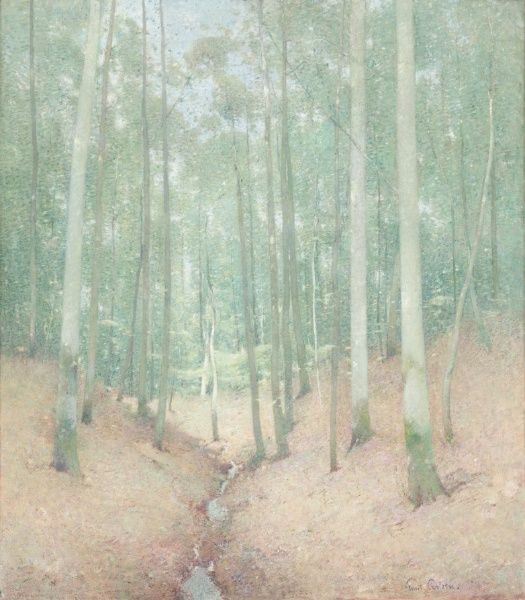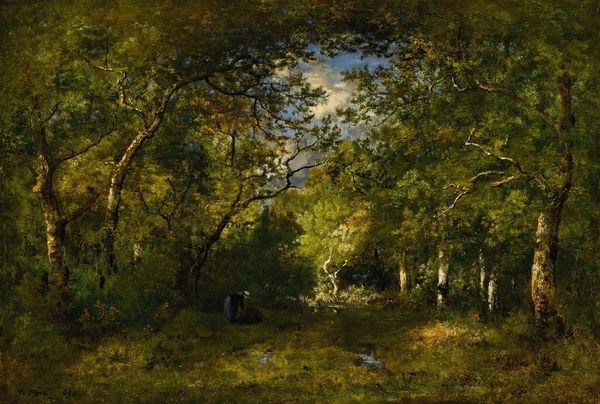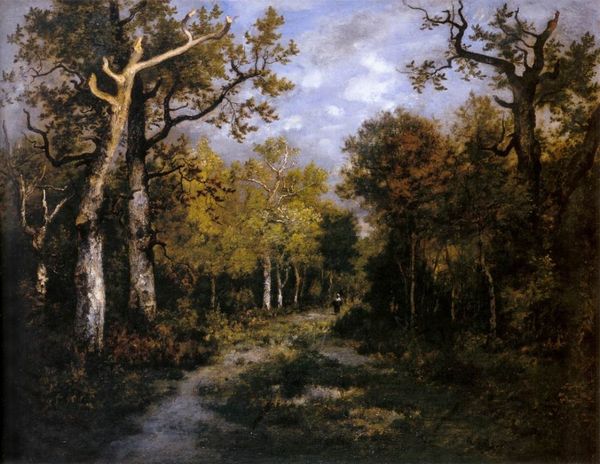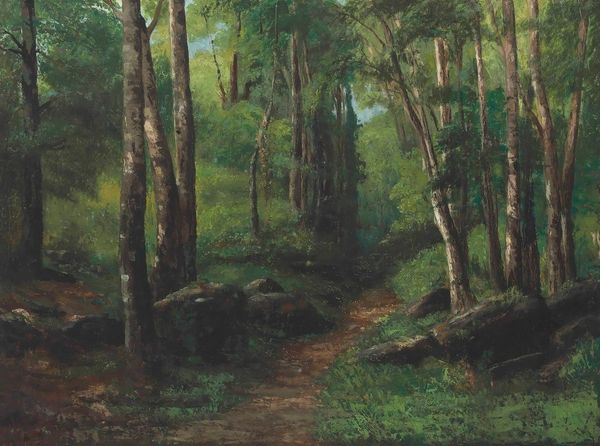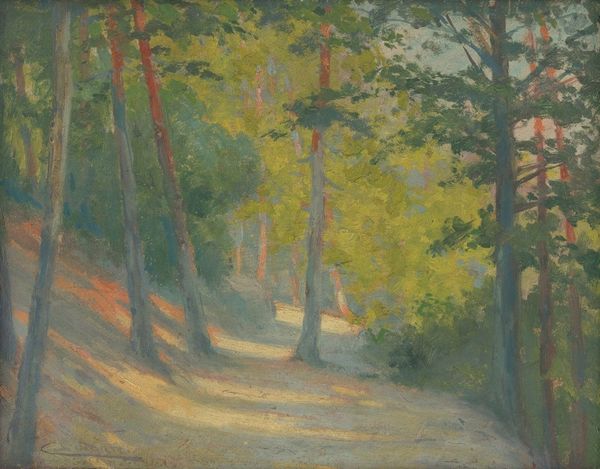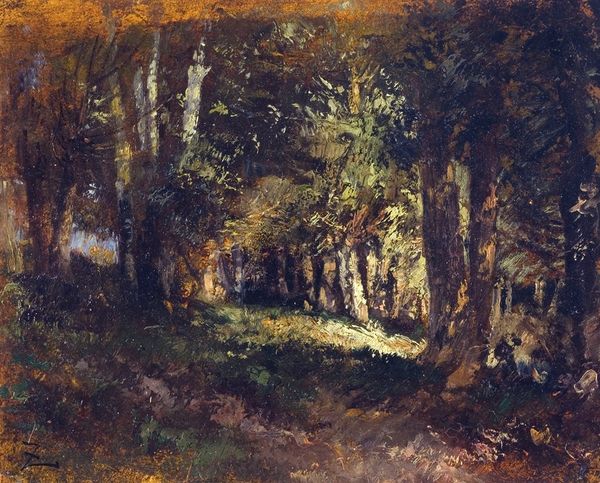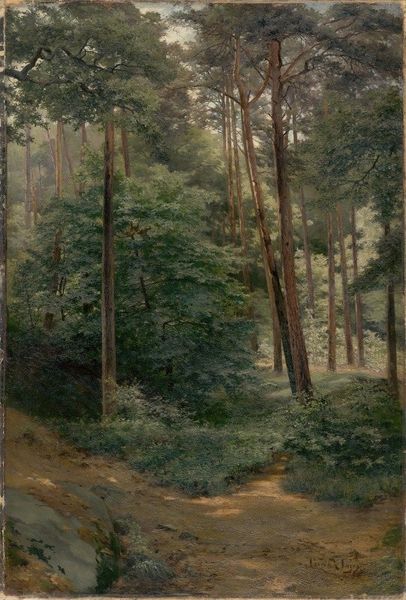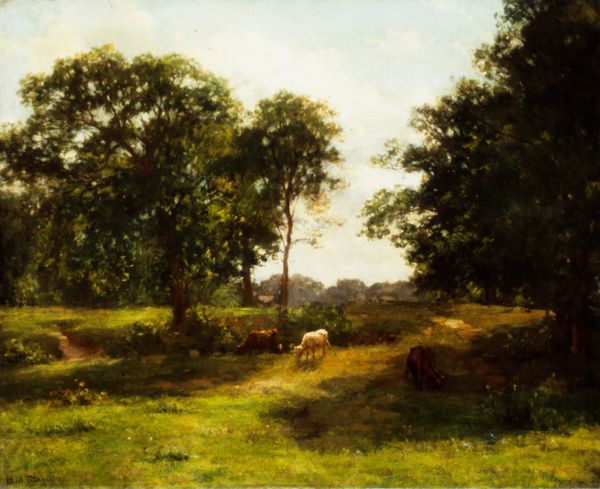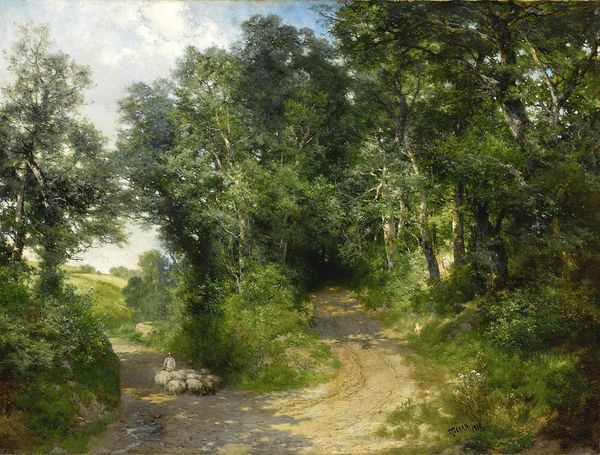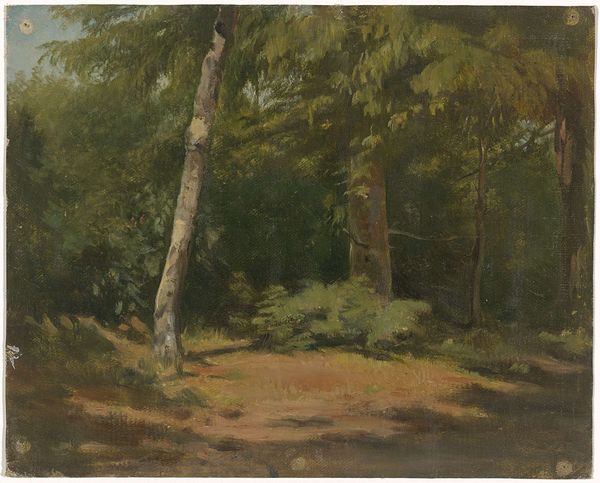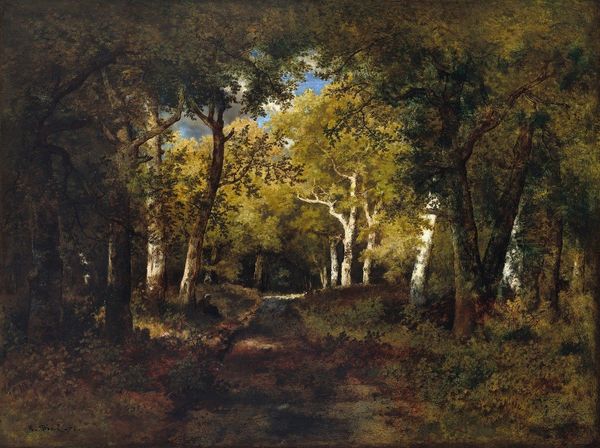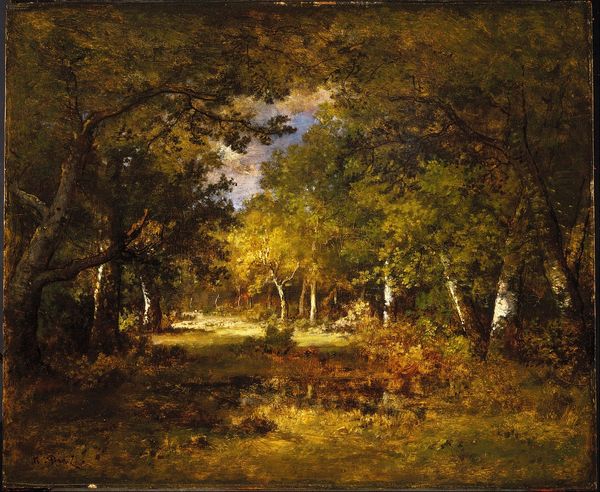
Copyright: Public Domain: Artvee
Editor: Here we have Ľudovít Čordák's "Wooded Landscape With Little Birches," painted between 1894 and 1896 using oil paint. It strikes me as a fairly conventional, albeit beautiful, impressionistic landscape. What can you tell me about it? Curator: It’s indeed a lovely example of Impressionism, but its context reveals more. Consider where this painting might have been displayed, and for whom? Editor: Probably in a bourgeois home, or a gallery catering to that class? To be honest it feels decorative... Curator: Exactly! Landscapes like these became increasingly popular as symbols of national identity. Think about the rise of nationalism in Europe at this time. This isn’t just any forest; it's a specifically *Slovak* forest. Do you think owning or commissioning art like this can signal identity or political leanings? Editor: So it's not just about aesthetic pleasure; it's a statement? Sort of like waving a flag? Curator: Precisely. Also, consider the role of institutions. Where would Čordák have trained? Who were his influences? Impressionism might have seemed like a rebellious movement in France, but its adoption in Slovakia carried different connotations and served different needs in exhibiting national pride and creating visual unity and meaning. Editor: That reframes my entire perspective! I initially saw a pretty picture but now it’s more like a historical document tied into larger movements! Curator: Exactly! The history lives inside of these "pretty pictures". Hopefully it prompts visitors to reconsider their own assumptions regarding what is visually appealing when approaching works of art. Editor: Thanks for guiding me to understanding! I never considered how deeply entangled painting might be with socio-political meaning.
Comments
No comments
Be the first to comment and join the conversation on the ultimate creative platform.
